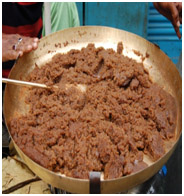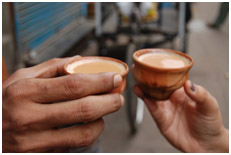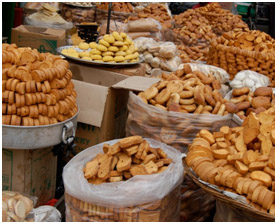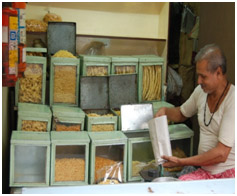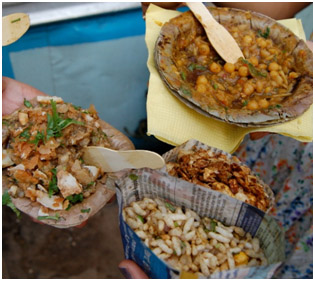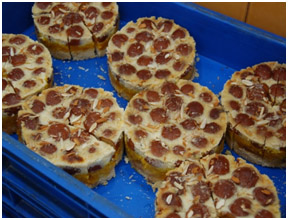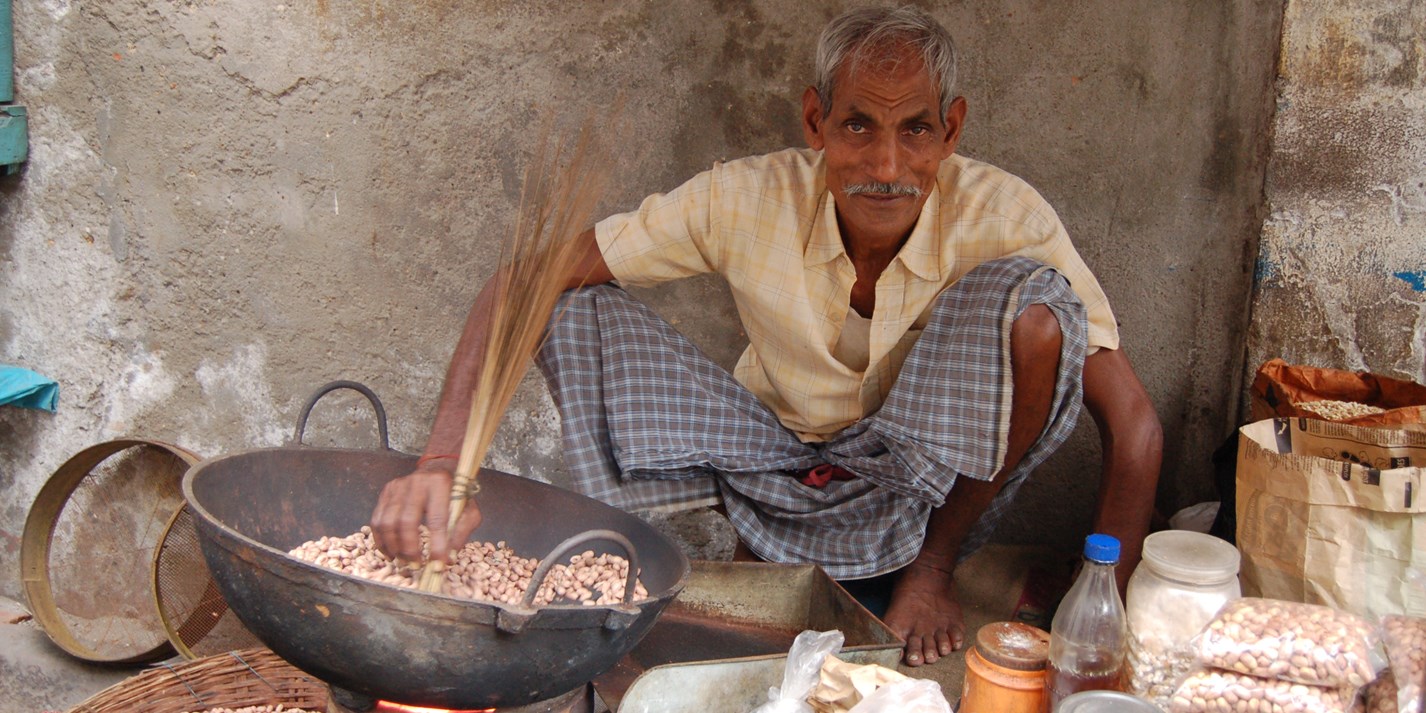
A Journey Through Time in Calcutta
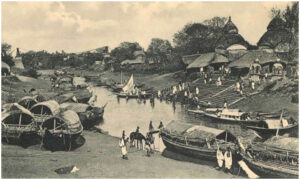 Bengal and in particular Calcutta, has always fascinated me in an almost fabled sort of way. Knowing about the many myriad cultural influences that dot its history be it the Muslims, Iranians, Armenians, Portuguese, French, British (and Anglo-Indian), Chinese, Biharis, or Marwaris. This confluence of cultures also influenced brilliant minds that added to its eclectic, intellectual legacy –Rabindranath Tagore, the first non-white to have been awarded a Nobel prize in literature for his Gitanjali in 1913, the many freedom fighters and revolutionaries who shaped the way modern India would think such as Subhash Chandra Bose, MaulanaAbulKalam Azad or the prolific guruSwami Vivekananda who introduced Yoga and Vedanta to the outside world, Raja Ram Mohan Roy who pioneered a socio-religious reform movement and became more popularly known as the father of Indian renaissance, the extraordinary humanitarian, Mother Teresa, though not born Bengali, is very much an integral part of Bengal, cinema maestroSatyajit Ray, who was awarded an Oscar for lifetime contribution. This list could go on and on and perhaps helps to understand my enchantment with Bengal.
Bengal and in particular Calcutta, has always fascinated me in an almost fabled sort of way. Knowing about the many myriad cultural influences that dot its history be it the Muslims, Iranians, Armenians, Portuguese, French, British (and Anglo-Indian), Chinese, Biharis, or Marwaris. This confluence of cultures also influenced brilliant minds that added to its eclectic, intellectual legacy –Rabindranath Tagore, the first non-white to have been awarded a Nobel prize in literature for his Gitanjali in 1913, the many freedom fighters and revolutionaries who shaped the way modern India would think such as Subhash Chandra Bose, MaulanaAbulKalam Azad or the prolific guruSwami Vivekananda who introduced Yoga and Vedanta to the outside world, Raja Ram Mohan Roy who pioneered a socio-religious reform movement and became more popularly known as the father of Indian renaissance, the extraordinary humanitarian, Mother Teresa, though not born Bengali, is very much an integral part of Bengal, cinema maestroSatyajit Ray, who was awarded an Oscar for lifetime contribution. This list could go on and on and perhaps helps to understand my enchantment with Bengal.
Ever since my journey in food began, I have always known about the incredible food in Calcutta and my recent visit only re-affirmed happily and emphatically that everything I had heard about her many cuisines were all true!
I had to start my food trails with its famous street food. The first tip on a foodie crawl of any city – learn to pace yourself. There is a serious belief that the kati roll was born in Cal. The beautifully cooked layered bread, wrapped around succulent and delicious kababs, were so good that I was convinced this had to be the land of the kati rolls.
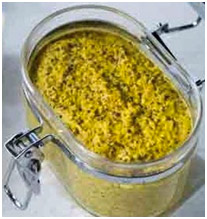 Chaat is also almost synonymous with Calcutta, I made my way to a very popular chaat hub in Park Street and opted for the more local Jhaalmuri, Ghughni, Churmun and(several helpings of)Puchkas.There is something so pleasurable about eating out on the street amid organized chaos.
Chaat is also almost synonymous with Calcutta, I made my way to a very popular chaat hub in Park Street and opted for the more local Jhaalmuri, Ghughni, Churmun and(several helpings of)Puchkas.There is something so pleasurable about eating out on the street amid organized chaos.
A pit stop at Bancharam, one of the famous sweet shops, for a Singara (their version of a samosa), Gud ka sondesh (a milk based sweet made with a very seasonal molasses, only available for 2 months a year), the best Rosogollas (my favourite) and Mishtidoi.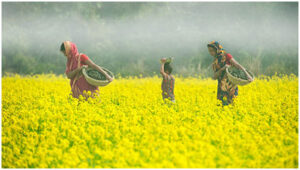
I am quite vociferous and obvious about my love for another amazing cuisine that was born here – Indian-Chinese (In India it is only referred to as Chinese). The early Hakka Chinese settlers came looking for work in the ports of Bengal and set up little hawker stalls for their community. The Bengalis and later the rest of India, took to the cuisine in a huge way and is possibly every Indian’s top 5 favourite Indian micro cuisines. Of course over the decades, it evolved into a spicier version. An early morning walk in Tirretta bazaar (old Chinatown) gives you a real peek into this settlement. A bustling fresh fruit and vegetable market with some vendors also offering Chinese breakfast – freshly steamed chicken and pork momo’s off gigantic steamers, fish ball soup, pao buns and prawn shumei. I also saw strings of (freshly made) sausages on sale, which is quite unusual in a fresh market in India. The bazaar starts to wrap up from 7:30am as it morphs into a busy business district, leaving no clue of the market. Tangra, the new China town, is dotted with many restaurants serving cheap and cheerful fare.
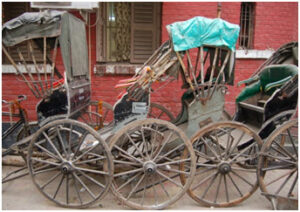
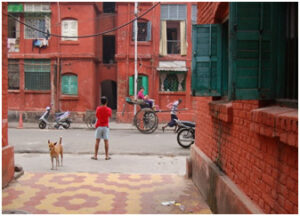 The Tibetan momo’s that made their way to Kolkata are also all over the city. You don’t have to go very far for a good plate of these steaming hot, delicious dumplings.
The Tibetan momo’s that made their way to Kolkata are also all over the city. You don’t have to go very far for a good plate of these steaming hot, delicious dumplings.
It feels special having Cha or Tea in the bhar, bio-degradableterracotta cups, used for tea, lassi or mishtidoi. It seems almost a shame that they are discarded (from dust to dust) after only one use. A part of the Indian heritage that still thrives in Bengal.
Traipsing around north Calcutta, broad brushed (Bengali) ‘Babuland’,I caught beautiful strains of the RabindraSangeet. I was fortunate to be invited to a home cooked Bengali feast in a friend’s traditional (and ancestral)home. Tucking into fresh Luchi (puri), Aloo Dom (Potato curry), Mochar(Banana flower) Chop, MaachBaaja (fried fish), Paturi (fish marinated in mustard, wrapped in Banana leaf and steamed), delicate ChingriMalai (Prawns in coconut milk) andShorshemaach (fish curry in a mustard gravy).
I am almost grateful for the Bengali’s love of seafood and mustard. The use of mustard in its various forms gives the cuisine a distinct flavour profile. Mustard oil is used to cook most curries and even drizzled over jhaalmuri giving it a nice punch. The fantastic kashundimustard paste is used as a rub or marinade and delicious as a dip. Black Mustard seeds are of course an integral part of the Bengali five spice mix: PaanchPhoron. The other spices are Fennel seeds, whole Cumin, Nigella seeds and Fenugreek seeds. This spice mix is also used for pickling, marinades, are great to temper lentils and vegetables (try roasted sweet potatoes), in curries and even a bread dough.
“What Bengal thinks today, India thinks tomorrow.”
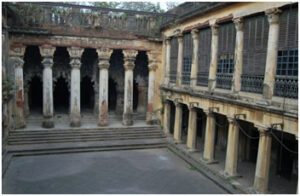
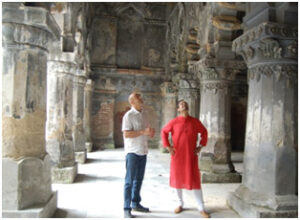 The Bengali’s are great thinkers and love a good debate. The many ‘adda’s’ in coffee houses that mushroomed all over the city are urban legends and institutions. I visited the Indian Coffee house, secretly tucked away, off College road (famous for its kilometer long stretch ofschool and college bookshops also stalls selling old{and new} books covering nearly every topic under the sun).Housed in the erstwhile Albert Hall, it became a coffee house in 1942 and since coffee was more expensive than tea, it was affordable only to a certain socio-economic class. It became ameeting place for poets, artistes and the literati. The coffee house was also the breeding ground of several political and cultural personalities and movements.Today, it seems to be the London’s equivalent of a pub, a place you would hang out, for a few drinksand chat after work, enroute to home. Over a strong black coffee, I sat there soaking in the atmosphere, wondering if only those walls could talk.
The Bengali’s are great thinkers and love a good debate. The many ‘adda’s’ in coffee houses that mushroomed all over the city are urban legends and institutions. I visited the Indian Coffee house, secretly tucked away, off College road (famous for its kilometer long stretch ofschool and college bookshops also stalls selling old{and new} books covering nearly every topic under the sun).Housed in the erstwhile Albert Hall, it became a coffee house in 1942 and since coffee was more expensive than tea, it was affordable only to a certain socio-economic class. It became ameeting place for poets, artistes and the literati. The coffee house was also the breeding ground of several political and cultural personalities and movements.Today, it seems to be the London’s equivalent of a pub, a place you would hang out, for a few drinksand chat after work, enroute to home. Over a strong black coffee, I sat there soaking in the atmosphere, wondering if only those walls could talk.
Jai Kali, Kalkatte-wali
The Goddess Kali, who possibly gave Calcutta its name, is the patron deity, looming large over the city and her people. The city sort of shuts down during the DurgaPujawhich celebrates the victory of good over evil. The bhogis a traditional festive food, a sort of khichdi(vegetarian kedgeree) served along with a fried vegetable (Aubergine or potato). An experience of the city during the Puja is on the list, for my next visit.
Calcutta, the second city (after London)
A jewel in the British empire, it was capital to British India until 1912. The importance it had is obvious with the stunning buildings including the Victoriamemorial, the innumerable beautifully designed green spaces and several monuments giving it the title, the city of palaces. The Anglo-Indian(more accurately, Eurasians in general) community in Kolkatahad a very unique culture and spawned a micro-cuisine as well. Being half Anglo-Indian myself, it was special to walk around the pockets where the community had clustered. They are famed for their Christmas festivities and food, in particular baked goodies. It was a treat to exchange notes with some of the residents about our favourite food: ball(kofta) curry, Railway lamb, Oxtail stew or guava cheese.
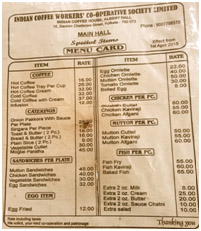
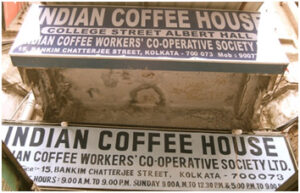 There is so much more I want to write about my experiences. The rich Nawabi cuisine, thanks to the exiled Nawabs who brought with them hundreds of cooks and custodiansof their cuisine, the several modes of transport unique to the city, the Marwaris and their incredible vegetarian fare, the Jewish bakeries and I could not possibly tire talking about the wonderfully affectionate, hospitable and grounded people.
There is so much more I want to write about my experiences. The rich Nawabi cuisine, thanks to the exiled Nawabs who brought with them hundreds of cooks and custodiansof their cuisine, the several modes of transport unique to the city, the Marwaris and their incredible vegetarian fare, the Jewish bakeries and I could not possibly tire talking about the wonderfully affectionate, hospitable and grounded people.
I think of Calcutta, with a sense of nostalgia, reminiscing about its many historical influences, marveling that one city could have been enriched so much with so many cultures. Also, with an odd sense of loss, for its unrealised potential. It is unfortunate that books and movies have mostly focused on the city’s poverty and slums (which in a way sadly exists in all our big cities) leaving us with poignant stereotypes in our minds. There is a richness, greatness and depth that is still going strong, while several of the Indian big cities are diluting fast in spirit.
Once Calcutta, now Kolkata. The semantics have not changed its quintessential spirit. I can’t wait to be back and if you want people and a city with a soul, come to Kolkata.


